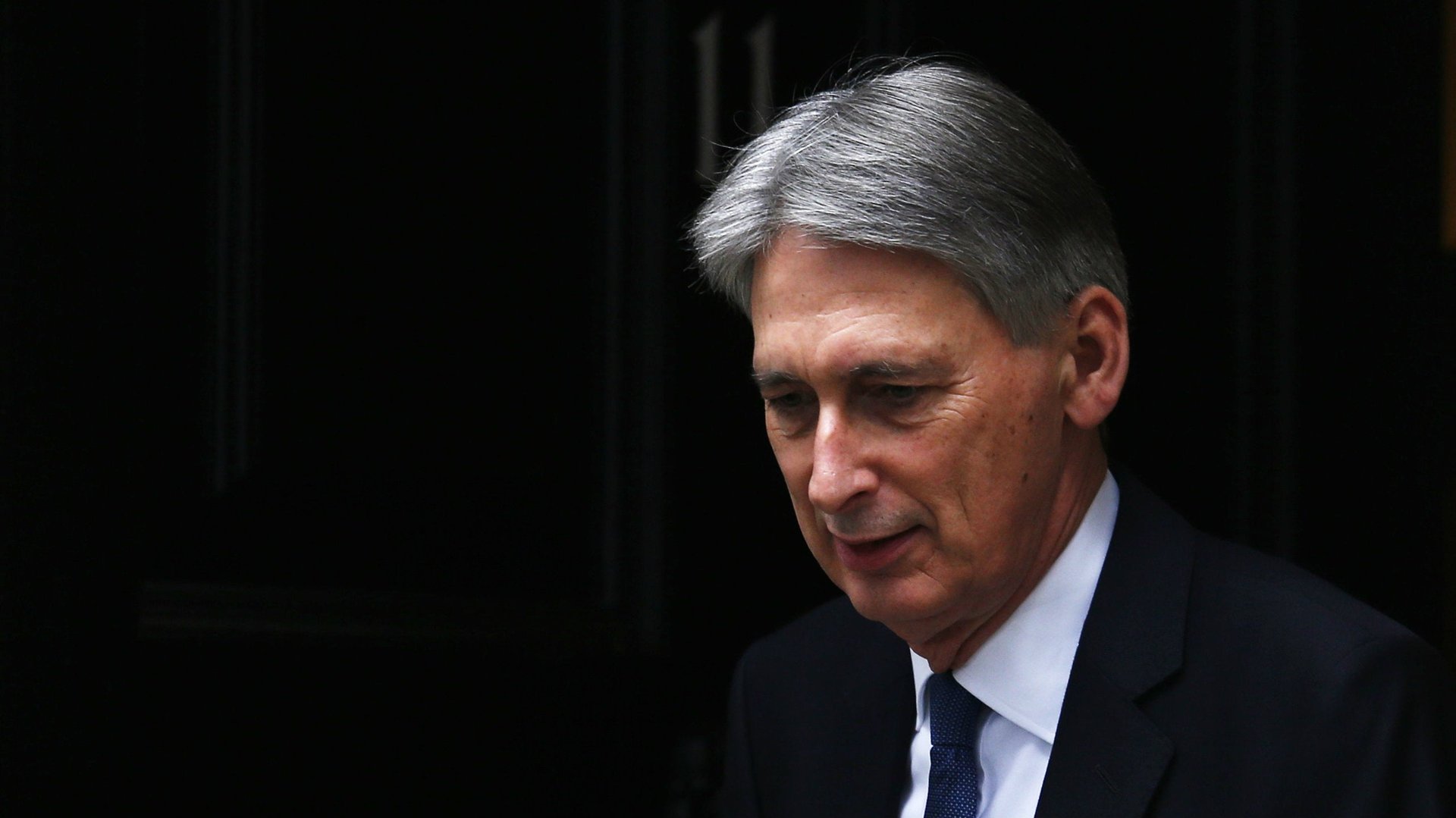A warning from Britain: Populism and conservatism don’t mix
The UK government has been trying to appease the swell of populism in Britain that voted for Brexit five months ago. Wednesday was its first chance to offer something concrete. That’s when the governing Conservative party delivered its “Autumn Statement,” an update to its fiscal and spending budget plans. It was supposed to be the day the UK’s chancellor of the exchequer, Philip Hammond, hit the “reset” button, and taken steps to boost economic growth or help the poorest people.


The UK government has been trying to appease the swell of populism in Britain that voted for Brexit five months ago. Wednesday was its first chance to offer something concrete. That’s when the governing Conservative party delivered its “Autumn Statement,” an update to its fiscal and spending budget plans. It was supposed to be the day the UK’s chancellor of the exchequer, Philip Hammond, hit the “reset” button, and taken steps to boost economic growth or help the poorest people.
Hammond started out by promising “to build an economy that works for everyone, and where every corner of this United Kingdom is part of our national success.” But as he listed the government’s tax and spending plans, it became clear that its populist rhetoric could not be met by action. The party’s desire for fiscal conservatism won out.
Will it be a pattern that’s repeated in other countries confronting a populist groundswell? In the US, Trump supporters voted for drastic change in much the same way as the UK’s Brexiteers. Meanwhile, a referendum in Italy and elections in France and Germany are among the next chances populists will have to demand change. But it’s the UK that offers a glimpse of what governments are actually prepared to do to meet those demands.
The UK has long since abandoned any pretense it can achieve a budget surplus in a few years time. Now it has been forced to admit it will have to borrow £122 billion ($152 billion) more than expected (pdf) over the next five years. Showing little appetite to blow out the deficit further, Hammond’s semi-annual update to the budget amounted to tinkering around the edges of traditional conservative policies, a far cry from the proposed reset.
To be fair, it did include plans for more affordable housing, an increase to the national living wage, and the creation of a £23 billion fund for R&D and infrastructure investment. But even this last promise isn’t all that it seems. Some £2 billion a year will go to fund science and tech R&D, a pledge scientists met with skepticism. Meanwhile, the UK will spend just 0.8% of GDP on economic infrastructure this year, and it will be at least another four years before that figure rises to at least 1%.
Economic growth is forecast to slow significantly to 1.4% next year, but the Autumn Statement was short on any major spending plans, particularly on infrastructure. The disappointment was plainly visible in the markets. The share prices of large British construction companies such as Balfour Beatty and CRH all fell.
The National Institute of Economic and Social Research (which noted that the £23-billion fund mostly consists of old spending plans) gave a thumbs down to the chancellor’s plans:
“The weakness of the Autumn Statement is the lack of an immediate response to the deep questions reflected in the Brexit vote. There is nothing to address the fundamental skills problem in many of the regions of the UK.”
Has the UK government learned anything from the Brexit vote and the backlash against the elites? It’s goal of cutting corporate tax rates to the lowest in the G20 suggests not. Hammond is sticking to the plan of lowering the rate to 17% but if president-elect Trump introduces a rate of 15% in the US, there could be a race to the bottom between the two countries. Putting money in the pockets of big business surely won’t be welcomed by the lower and middle classes that wanted to do away with the status quo, who believed Brexit would improve their living standards and provide more money for public services, particularly in the face of a drop in real wages.
This is becoming familiar territory for the Conservative party. Earlier this week, prime minister Theresa May told business leaders that the benefits of capitalism need to be spread around the country. She said Brexit was an “opportunity to build a more prosperous, more equal country–where prosperity is shared and there is genuine opportunity for all.” But in the very same speech, May walked back a proposal to have workers on company boards.
The challenge the UK government faces is already being reflected across the Atlantic. Trump promised huge spending on infrastructure during the election campaign that would create thousands of jobs. Although those proposals have still to coalesce into something concrete, recent reports suggest that Trump may only be offering a $137 billion in tax breaks to private investors to finance construction work. This would help large companies but do little to create new jobs. So much for anti-establishment.